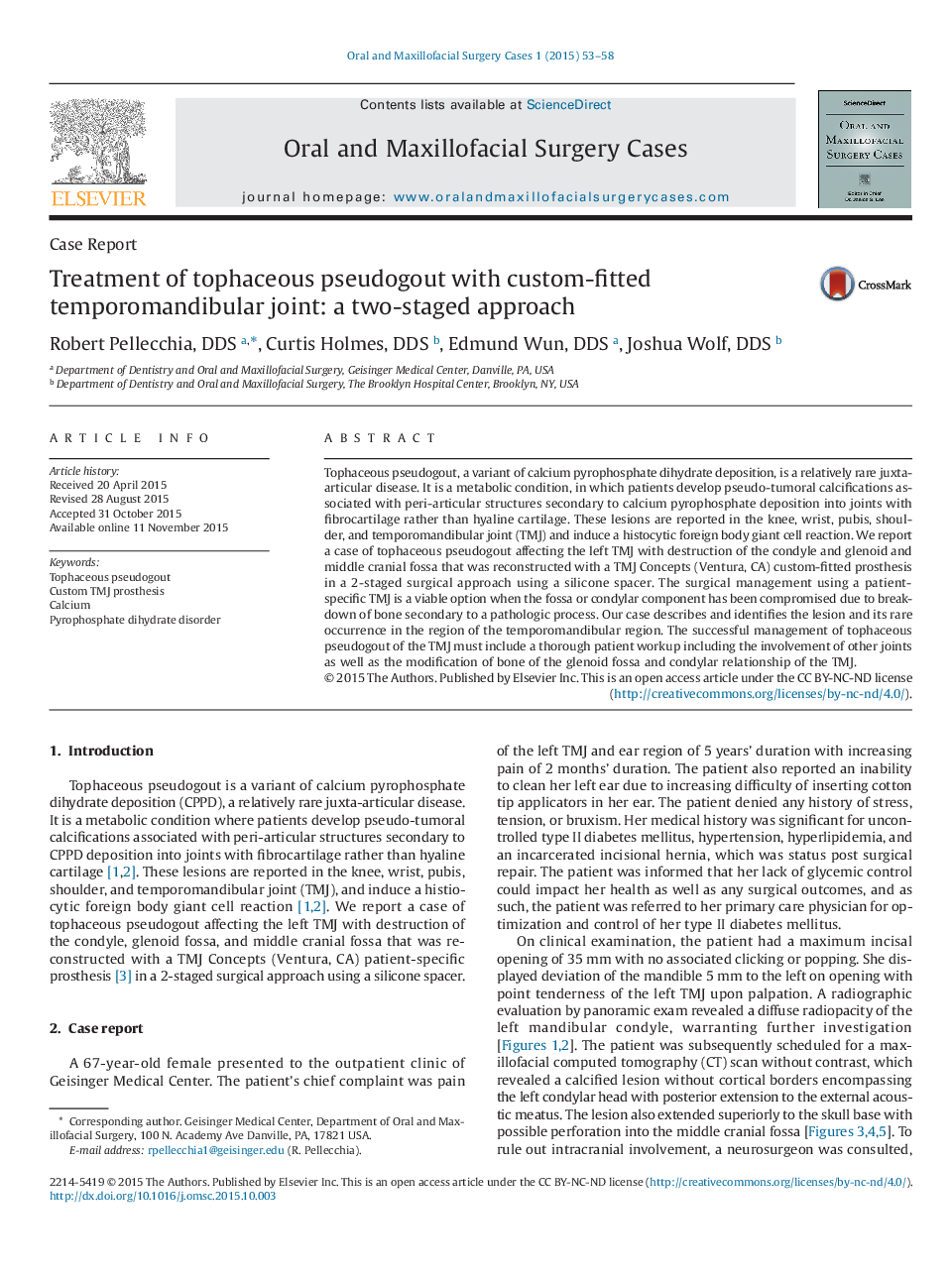| Article ID | Journal | Published Year | Pages | File Type |
|---|---|---|---|---|
| 3162876 | Oral and Maxillofacial Surgery Cases | 2015 | 6 Pages |
•Tophaceous pseudogout of the temporomandibular joint is a variant of calcium pyrophosphate dihydrate deposition.•Calcium pyrophosphate dihydrate deposition affects fibrocartilage more so than hyaline cartilage.•Excisional biopsy of lesion with resection of the condyle and simultaneous placement of a silicone spacer.•Fabrication of a patient-specific temporomandibular joint prosthesis of the left condyle with restoration of function.
Tophaceous pseudogout, a variant of calcium pyrophosphate dihydrate deposition, is a relatively rare juxta-articular disease. It is a metabolic condition, in which patients develop pseudo-tumoral calcifications associated with peri-articular structures secondary to calcium pyrophosphate deposition into joints with fibrocartilage rather than hyaline cartilage. These lesions are reported in the knee, wrist, pubis, shoulder, and temporomandibular joint (TMJ) and induce a histocytic foreign body giant cell reaction. We report a case of tophaceous pseudogout affecting the left TMJ with destruction of the condyle and glenoid and middle cranial fossa that was reconstructed with a TMJ Concepts (Ventura, CA) custom-fitted prosthesis in a 2-staged surgical approach using a silicone spacer. The surgical management using a patient-specific TMJ is a viable option when the fossa or condylar component has been compromised due to breakdown of bone secondary to a pathologic process. Our case describes and identifies the lesion and its rare occurrence in the region of the temporomandibular region. The successful management of tophaceous pseudogout of the TMJ must include a thorough patient workup including the involvement of other joints as well as the modification of bone of the glenoid fossa and condylar relationship of the TMJ.
